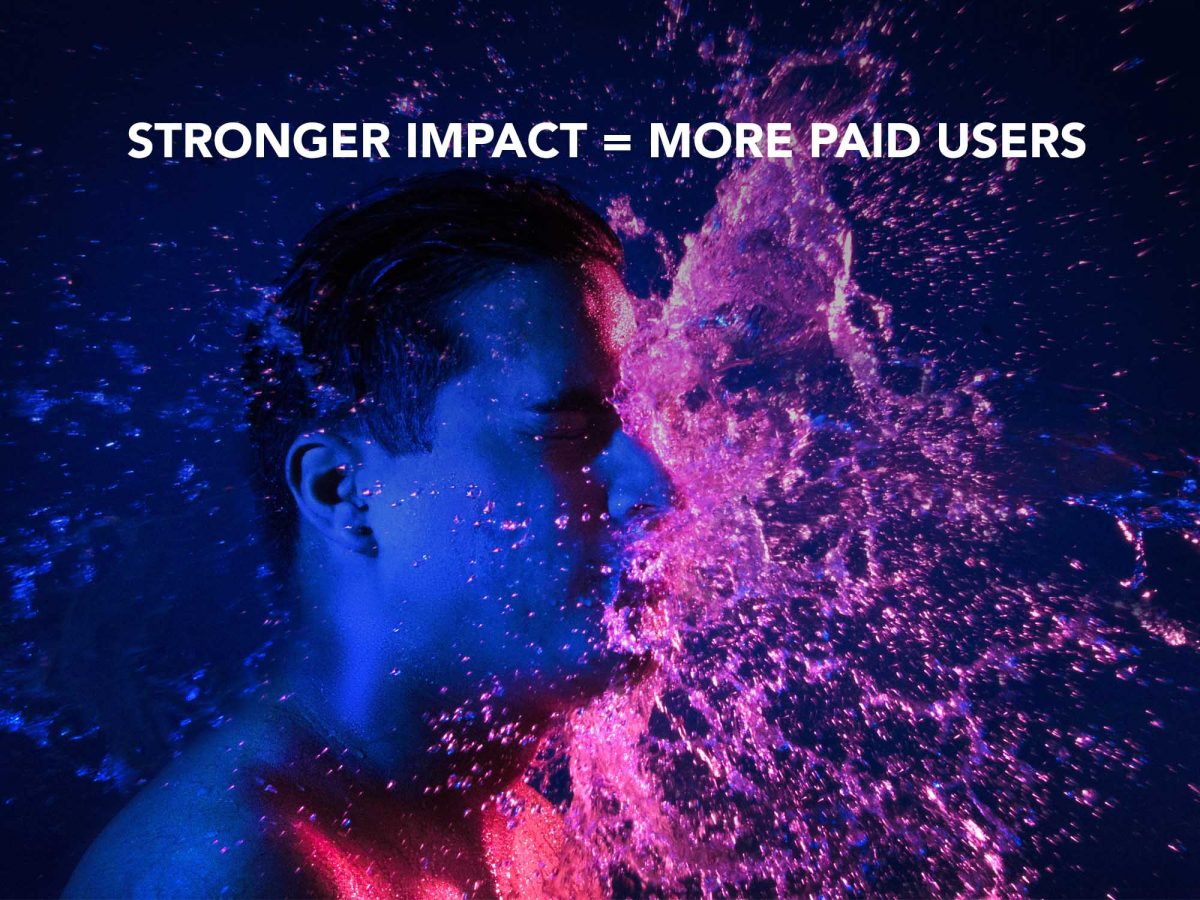Here’s the good news:
Given that you’re profitable, I see only upside in doubling down on being unique to a specific audience of users.
Why? Because you’ve already got them. Having multiple audiences is better than having too few.
Maybe they’re part of different tribes and indeed what I’m saying (to double down on one tribe) is against all humans instincts. I’m aware what I’m proposing means:
- Change something that’s working
- Start saying no to people
- Specialise further, when in fact what you want to do is serve even more people.
But once again I’m reinforcing the idea that companies need to be as impactful as possible to a specific group of very targeted people (a viable audience though, don’t misquote me on that).
Once what you’ve prepared for these people gets delivered to them, they will do two things for you:
- Tell other people from this tribe that you’re targeting — the like-minded
- Also tell people around them that are part of adjacent audiences.
Practical example
Designers will tell other designers how much this product has helped them — point 1. But given the impact is so strong, they will mention it to:
- Developers: “By the way, when I design, this product is amazing. Have a look so you can understand”
- Their CFO and/or CEO: “Yes, we can’t cut down on spending on this product. We absolutely need it, it’s tremendously impactful”
- Their old high school friend who’s asking about how to start working in the design industry
- People in a forum/community that might not be
centered around design
Which was point #2. They might even make a YouTube comment that becomes “top highlighted” and there you go.
In other words, rather than making a product that’s “just good” for developers and designers and which won’t be talked about further because it’s not that impactful, I’m advocating for something that’s so good for designers (one of the tribes) that they will talk about it for you — to developers, the CFO/CEO of the company etc.
“Right, Daniel, that sounds good. But I don’t believe it ’til I see it in practice.”
Good, let’s get to practical then.
Twitter’s unique character meant you were tied to writing a 140- character message, back when it started. Eventually, because of the easier-to-digest constraints put in place, personalities like the president of the US or Elon Musk are using it as the go-to platform to spread their messages.
What did they do in the early days? At one point, they made it so that SXSW people would make use of it and love it — and that indeed was a gold mine as some of these people
- Memorable trait: 140 characters
- For whom? Techies at SXSW
Guinness
Guinness beer back in the ’50s and ’60s made their book of world records. Their “people” had a huge problem: they were having disputes over facts, especially in pubs, over beer.
So what did they do? Guinness supplemented not only their trivia nights but also their day-to-day thinking by releasing the book of records. Even though they are not officially linked anymore these days, you’ve probably heard of both.
What happened next? They became the undisputed international authority when it comes to verifying and classifying world records. Or trivia facts. In fact, the superlative of trivia facts.
Back to my point now.
I said “their people” because before they’ve released the book of world records, that audience was not theirs yet. Which brings me to another point: today, we’re at an early stage. There are so many untapped audiences out there that the phrase “blue ocean” indeed makes sense.
Add the internet, social media and how the cost of entry is close to 0 now for many businesses and that means you can go as far as the mind lets you.
You’re offering a SaaS that helps people organising bookmarks, let’s say? Do something around organised people. Marie Kondo is a popular figure these days for organised people.
Oh, what is it? Did I say as targeted as possible? Then it should be “organised techies” — if you do something like “how to organise your folders properly”, then the people who will watch that are definitely those who also care about organising bookmarks. It just so happens that your company is the one putting out these very helpful pieces out there.
And I simply picked up this imaginary SaaS as it was the first thing I could think of, it’s probably not even a viable business model. Think about how much of an opportunity it is for an actual business.
But back to Guinness:
- Memorable trait: THE authority of facts
- For whom? Trivia people
Shopify
Shopify became the go-to for off-the-shelf e-commerce solutions. Much like the Guinness world of records, they’ve noticed the value of content creation and slowly but surely acquired top Google results for questions posed by those who start businesses.
They got guest posts, success stories and major FAQs related to e-comm answered. But they didn’t stop there. The point was to help people get off the ground.
- Memorable trait: E-commerce made simple. A few clicks to get started
- For whom? First-time/bootstrapped entrepreneurs
——
Let’s not talk just actual examples. Let’s give an idea for a SaaS company.
A privacy messenger SaaS
In the headline of the website this company can let the user know there’s a private message meant for them below. And “below” would be a “self-destruction in 10 seconds after reading” black bubble.
Click it, read something like “We put your privacy and security on top of everything.” or any other direct-speech to privacy-aware people and there you go. Poof. After 10 seconds, instead of the text in this black bubble, there’s just “********”
Something that’s catchy, not bothering, playful and that sends the right message to the right people. Surely if they refresh the website they can do the same thing again but the purpose of this idea is to communicate what the company cares about to the people that care about that as well.
- Memorable trait: Company talks to their users only through self-destructing messages
- For whom? Privacy-aware people
The bottom line
That’s how I’d reduce user churn. By aiming to an even more precise audience, out of those that are already under your company’s wing.
If you’re still not catering to every single need of a specific audience and making it so that they have no reason to not love your company, then consider the period of time until you make that shift as the period of time when you’ve tested audiences.
The jump is hard and scary but it’s the fountain of lower user churn and of higher revenue.
About Ch Daniel
I run Chagency_, an experiences design agency that specialises on helping tech CEOs reduce user churn. We believe experiences are not only the reason why users choose not to leave but also what generates word of mouth. We’re building a credo around this belief.
If I’ve brought you any kind of value, follow me and get in touch here: LinkedIn | Twitter | Email | Quora | YouTube (same content but in video)
I’ve also created an infinitely-valuable app for sneaker/fashion enthusiasts called Legit Check that impacted hundreds of thousands over millions of times – check it out at chdaniel.com/app
Please share this with someone and subscribe to our newsletter!— helps us keep pumping content?




